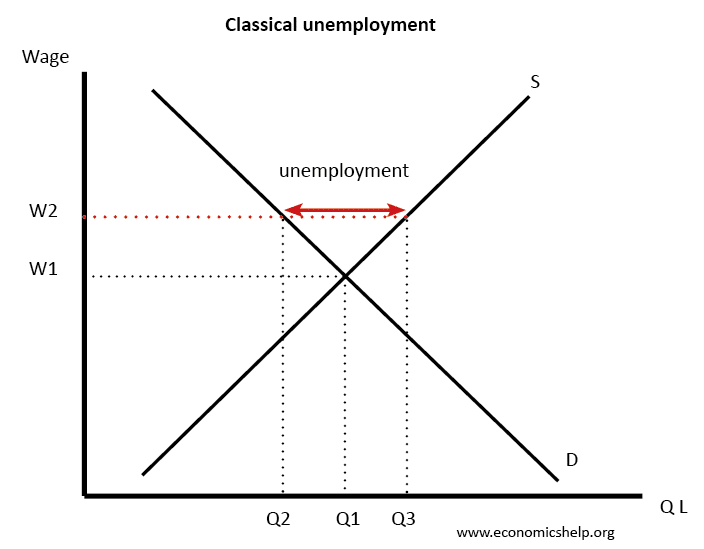Classical unemployment occurs when real wages are kept above the market-clearing wage rate, leading to a surplus of labour supplied.
Classical unemployment is sometimes known as real wage unemployment because it refers to real wages being too high.
Diagram Showing Classical Unemployment
Classical Unemployment = Q3-Q2.
In a free market, the quantity of labour would be Q1. But, with wages kept at W2, the supply (Q3) is greater than the demand (Q2)
Causes of classical unemployment
- Powerful trade unions which bargain for wages above the equilibrium.
- Minimum wages that create a legal minimum for wages.
- Deflation and ‘sticky wages’. Deflation is a period of falling prices. If there are falling prices, to maintain full employment, it may be necessary to cut wages. However, workers and firms often avoid nominal wage cuts – for the psychological cost. Therefore, during a period of deflation, classical unemployment is more likely to occur
Classical economists stress the importance of this type of unemployment. They argue that if wages were more flexible, then most unemployment could be solved.
Keynesian view on classical unemployment
However, Keynesian economists argue it is not as straightforward. They argue the problem may be a lack of aggregate demand (AD) in the economy. For example, if wages are cut, it could lead to a further fall in AD, as workers have lower wages. In this case, cutting wages may be ineffective in solving classical unemployment.
Also, if there is monopsony, then minimum wages and trade unions may not be causing unemployment because monopsony employs less than market equilibrium.
Related

